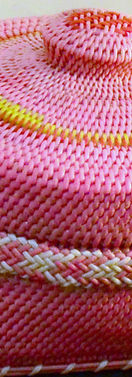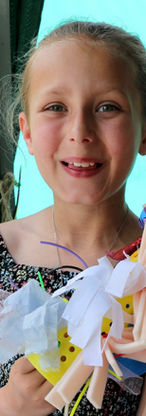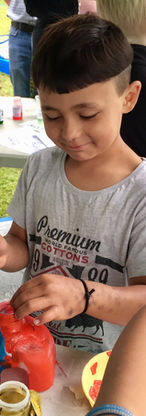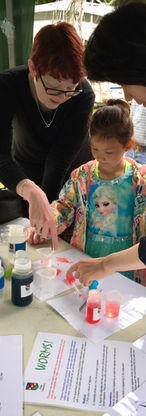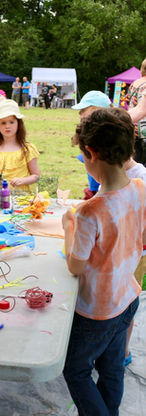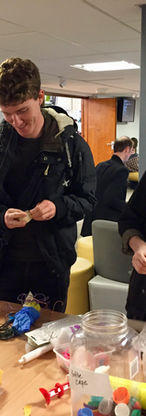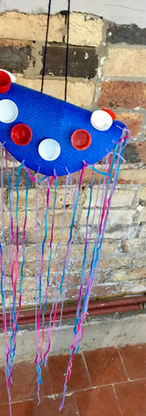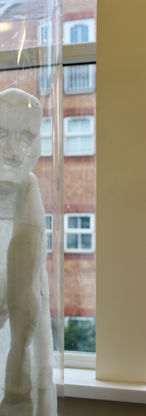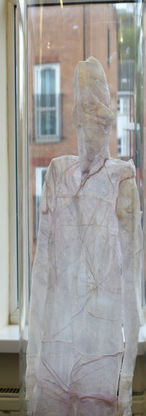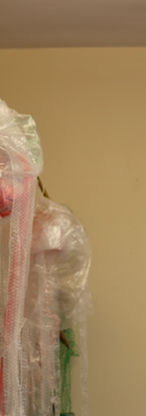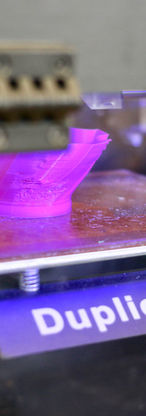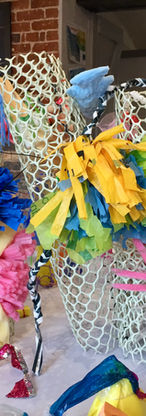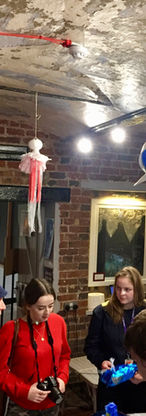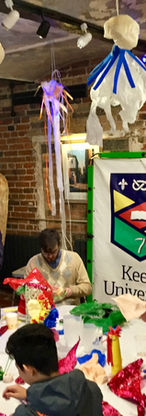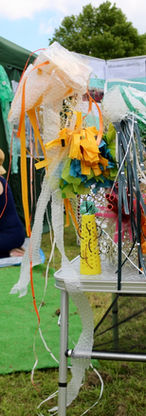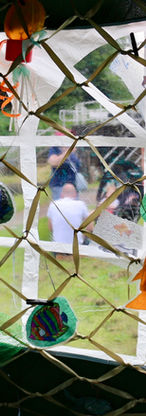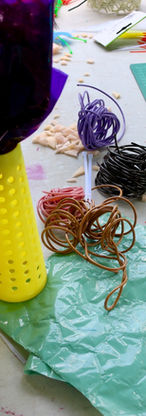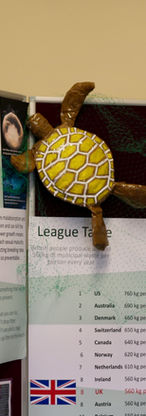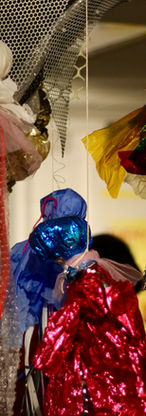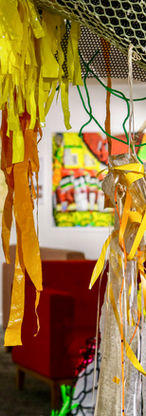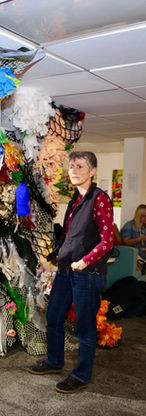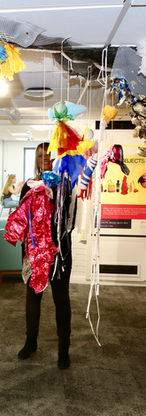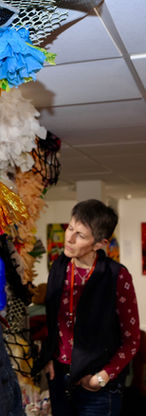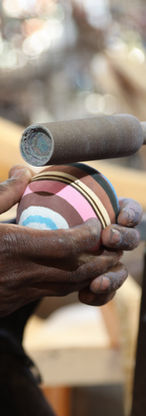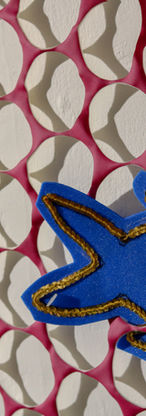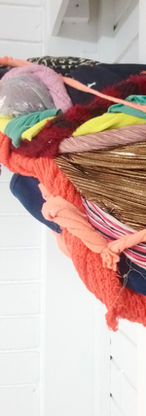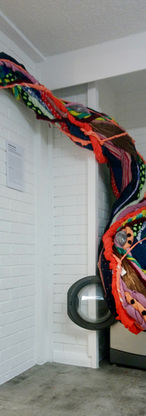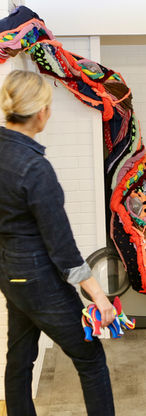
Exhibition Elements
‘Everyday Objects’
This series of images shows a selection of artworks exhibited in the 2012 Everyday Objects exhibition in Baguio City, the Philippines.
The work of a group of 25 Filipino artists and artisans brought together through Dr Deirdre McKay’s British Academy-funded project, Everyday Objects explored what kinds of things indigenous Filipinos were making from plastic waste.
This exhibition was part of Dr McKay’s wider project on the cultural significance of reworking plastic waste. The art works made, collected and curated here demonstrate the ingenuity and frustration behind the use of waste plastic in contemporary and replica crafts in the Philippines.

‘Play with Plastics’
This series of images, taken by Xiaoyu, shows her workshop participants learning about 3D printing with Keele’s Dr David Thompson and making sea creatures to contribute to the Reef installation made by Richard Redwin.
Xiaoyu’s workshop events have been supported by the Keele- based Hacking Plastic collective: Dr Deirdre McKay, Dr Sharon George, Dr Ceri Morgan, Dr Eva Giraud, Dr David Thompson, Dr Simon George and student volunteers. Her project has been awarded an Association of Commonwealth Universities’ Blue Charter Fellowship to generate global models for creative approaches to public plastics education.

‘Reef’
Reef is an installation exploring the threat posed by plastics in our oceans through a coral reef constructed from plastic waste. It juxtaposes our imagination of a healthy reef ecosystem with the discarded plastic materials that threaten its health.
This installation has been commissioned for the Subversive Plasticity exhibition. Conceptualised by Redwin as an artist-led community art piece, it features contributions from the public. Some of its key elements - coral and sea creatures - were made by participant at outreach events organised by Lei Xiaoyu held at B arts, Keele Student Union, the Etruria Canals Festival, and Stoking Curiousity.

‘Ocean Sole Factory’
This series of images shows
the Ocean Sole factory at work through the stages of production: sorting the recovered flip-flops, cleaning, stacking and then carving larger sculptures, like lions and whales. The resulting bucket of discards and offcuts will be repurposed into smaller items like key rings.

‘Plastic Spectrum and Fish’
Helena makes her artworks with beach plastics. She collects her materials where they have been washed up on UK beaches. The tide line is often a multi-coloured line of plastic materials from many countries and many sources: domestic, industrial, fishing, shipping, and litter. On even the cleanest beaches, with apparently no litter, Helena always finds some plastic washed ashore. She doesn’t cut the pieces up or change them at all; she uses them as they are, broken and worn by the sea.
Helena’s collages speak to the variety and persistence of
plastics in the U.K.’s coastal environments and to the U.K.’s place in the global circulation of plastics in our oceans.


‘Captured’
Captured is an installation exploring the threats to ocean life posed by plastics, using a fishing net and creatures constructed from plastic waste. It juxtaposes the way we use plastics to keep products safe in transit with the harm these same plastics do in the environment when they are discarded.
This installation has been commissioned for the Subversive Plasticity exhibition. Conceptualised by Ballard as an artist-led community art piece, it features contributions from the public. Some of its key elements – fish and sea creatures - were made by The Wonder Women group and Learners at Landau Ltd and by the public at outreach events.

‘Dressed in Plastic’
Polyester, acrylic, nylon, rayon – all of which are forms of plastic – now make up approximately 70 percent of clothing textiles. Synthetic (plastic) textiles are cheap and versatile. They give stretch to sportswear, and provide warmth and sturdiness in outdoor clothes. Synthetic textiles also contribute to ocean plastic pollution in subtle but inescapable ways: by leaching out into the environment as a result of washing and laundering processes. Synthetic textiles are a significant contributor to the microplastic pollution that’s accumulating in the food chain and being ingested by marine wildlife, and even in humans.
Commissioned for the Subversive Plasticity exhibition, Dressed in Plastic is an installation that explores how tiny synthetic textile microfibers — less than 5 millimetres in length — eventually reach the ocean. Estimates vary, but it is possible that a single load of laundry could release hundreds of thousands of fibres from our clothes into the water supply. Conceptualised by Richard Redwin, the installation is a representation of the invisible processes of pollution that occur as part of the mundane and everyday routines of life: washing and caring for our clothes. It attempts to make visible a microscopic problem that is otherwise difficult for humans to comprehend.

‘REFUGE’
Light installation made out of spray painted plastic tubing, cable tie ends, wire and a wooden embroidery hoop. Having initially been created for An exhibition of Blue (Acava Studios, 2019), Refuge has been hugely influenced by birds and their ways of organically weaving twigs and found materials in and out of one another as a means to protect themselves and their eggs.
Alou takes into consideration the correlations between the Urban environment, pattern and form. Being particularly interested in urban spaces and the throw away society that we live in, Amy seeks potential in off-cut and waste material usually overlooked through the process of experimentation in order to create one off playful textile sculptures and accessories in her studio based at Acava studios, Spode Works in Stoke-on-Trent. Having initially graduated from the Manchester School of art in 2013 with a BA (Hons) in Embroidery, although her practice is not all about conventional needles and thread, it’s become more about the generation of pattern, material exploration and the transitioning between two and three dimensions which are so often inspired by shrubs and organic growth which are associated to urbanised spaces.






